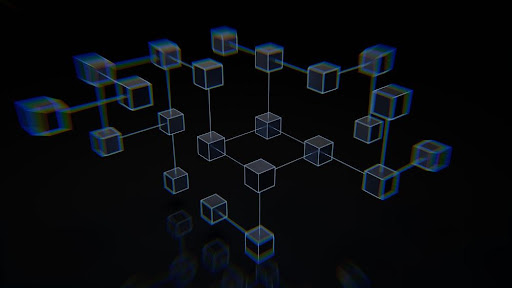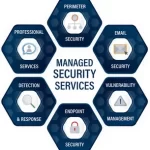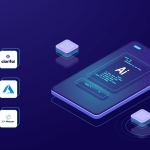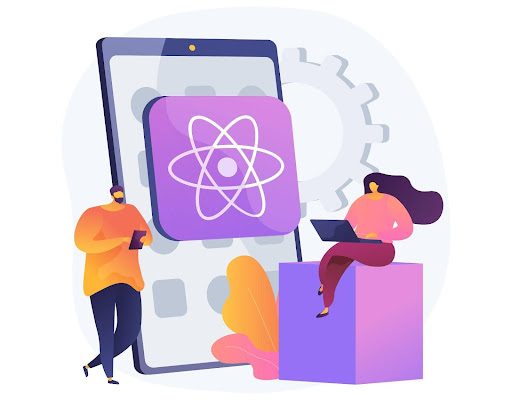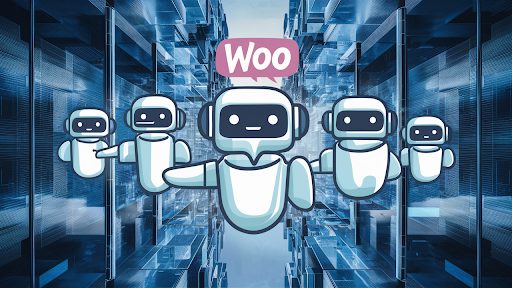Among businesses and developers looking to streamline operations, increase security, and enhance transparency, “blockchain” has become a buzzword in recent years. But the concept is also misunderstood by many, who do not recognize its benefits, uses, and implementation requirements.
In this article, we’ll discuss what blockchain is, the benefits of blockchain development, how to develop a blockchain solution, and more. Let’s dive right in!
Table of Contents
Blockchain Development Explained
The concept of blockchain development refers to the creation of a shared, unchangeable distributed ledger technology (DLT) that records transactions and tracks assets within a network, whether those assets are physical (money, real estate) or nonphysical (copyrights).
Because it enables information sharing quickly, accurately, and securely, it’s valuable in various industries. Permissioned blockchain network members can track orders, payments, production, accounts, and other data.
Blockchain development can yield many benefits, but you need to understand blockchain before taking advantage of its potential.
What Is Blockchain and How Does It Work?
Blockchain is a distributed ledger that uses cryptography to record transactions and track assets with a distributed, peer-to-peer network. Blocks, known as transactions, are then recorded on each server, also known as a node.
A blockchain is essentially a decentralized database managed by multiple participants. Its distributed ledger technology lets each node in the network maintain its copy of the ledger.
Inconsistencies can be identified by comparing the record against the copies stored on the other nodes. As a result, blockchain records are virtually tamper-proof.
Typical Applications of Blockchain Technology
Investing in blockchain development can benefit a wide range of sectors, including:
- Supply chain — Traceability of assets between suppliers and customers
- Voting — Ensured accuracy via the prevention of duplicate ballots
- Finances — Anti-money-laundering applications; intermediary cost and tax reductions in global payments
- Real estate —Accurate land and property ownership records
- Healthcare — Safekeeping of patient records; increased transparency in clinical research
Building a Blockchain Solution — Step-by-Step Guide
It takes time and research to build a blockchain solution, and it is highly dependent on your business model. However, you’ll need to follow a few key development steps regardless of your needs. We list and explain these steps below.
1. Identify the Issue You Wish to Resolve
Blockchain solutions offer many benefits, but there’s no such thing as a one-size-fits-all solution. Start by defining what you want to accomplish. We outlined the high-level use cases for blockchain development above. Compare your business needs closely with these use cases.
Create a problem statement outlining all the challenges you are trying to resolve. Verify that a blockchain solution can solve these problems.
Next, decide if you need to convert your existing application to a blockchain application or create a new one from scratch.
2. Define Your Requirements
The next step is to draft your business requirements, ensuring nothing is overlooked. For a complete ecosystem, you will need to consider what technologies will be required off-chain and on-chain.
This information can be used to construct a more concrete product roadmap, which can help you keep on top of deadlines and assist you in determining the resources that will be required.
3. Select a Consensus Mechanism
It is now time to identify your blockchain’s consensus mechanism. This is the method your system will use to ensure security and achieve trust in a decentralized network of nodes.
You can choose from many different consensus mechanisms. Here are some of the most popular options:
- Proof of stake
- Proof of work
- Proof of elapsed time
- Deposit-based consensus
- Byzantine fault-tolerant
Going into much detail regarding each of these mechanisms is beyond the scope of this guide. Still, the best blockchain development companies will know which one would best suit your operation based on your unique business needs and objectives.
4. Choose a Blockchain Platform
You must choose the right blockchain platform for your application since it will affect the skill set required from your development team. To ensure high-quality development, research and determine which platform aligns best with your needs.
When evaluating your options, consider the issues you want to solve, consensus mechanisms, design costs, developer requirements, and expected timelines.
5. Build Your Blockchain Node Network
You must decide if a permissionless or permissioned blockchain network is the best fit, along with what programming language you’ll use and any other factors that may influence development.
Do you need a public, private, or hybrid solution to meet your business needs? What type of blockchain node network will be used? On-premises, cloud-based, or both? What operating system do you plan on using for your application (e.g., Windows, Debian, Red Hat, CentOS, or Ubuntu)?
When it comes to this step, there are a lot of variables to consider, so you should research all your options and evaluate them against your objectives and available resources.
6. Configure Your Blockchain
There are several configuration elements you’ll need to consider when configuring a blockchain platform, such as:
- Asset issuance/re-issuance
- Permissions
- Key management
- Atomic exchanges
- Parameters
- Multi-signatures
- Address formats
- Native assets
- Key formats
- Handshaking
- Block signatures
It is important to remember that you can modify some of these elements at runtime. However, planning is always the best way to ensure a successful development process.
7. Build Your Application Programming Interfaces (APIs)
Certain platforms come with pre-made application programming interfaces (APIs), whereas others do not. This means you may have to build APIs to:
- Perform audit-related functions
- Generate key and address pairs
- Store and retrieve data
- Verify data through hashes and digital signatures
- Manage the lifecycles of smart assets
- Manage smart contracts
8. Design the UI
Having planned out your entire app, you can get to work designing the user interface (UI) for each software component.
It’s essential to understand how the APIs you have designed will integrate with the UIs on the back-end: The visual design will affect the app’s overall look, and the technical design will affect its architecture.
Challenges of Blockchain Development
Blockchain developers must face three main challenges as the blockchain ecosystem grows and different usage scenarios emerge decentralization, security, and scalability. Determining how to resolve these challenges without risking tradeoffs is called “the blockchain trilemma.”
Decentralization
Industries use blockchain for many reasons, but decentralization is probably among the most prominent ones. For example, the use of blockchain solutions in the world of finance, for example, allows customers to store and acquire cryptocurrencies without relinquishing control to banks.
Rather than relying on one node to verify transactions, a consensus is used (from a group of notes). Once verified, these transactions cannot be modified.
The downside of decentralization is the time it takes for multiple confirmations to reach an agreement. One of the primary challenges facing blockchain developers today is figuring out ways to speed up this process.
Security
Despite being a benefit of blockchain development overall, security poses a number of difficulties for developers. As blockchain is seen as such a secure technology, cybercriminals are attracted by the challenge.
Both decentralization and scalability can be hampered if the security of a blockchain is compromised. And the lack of regulatory oversight means that there is no centralized entity to help prevent potential security breaches.
Though there are few security breaches in blockchain, people have been known to exploit its infrastructural vulnerabilities. Blockchain developers must build networks that both add business value and ensure complete security.
Scalability
For blockchain to gain global adoption, it must handle a growing number of transactions and defend itself against cyberattacks while operating as expected. As we mentioned earlier, speed becomes an issue as block sizes increase.
Bitcoin initially capped its blocks at 1 megabyte to reduce the risk of cyber threats. Each coin, however, can record an infinite number of transactions, increasing each block’s size. As a result, blocks could eventually become too big for their size limitations, further reducing processing speed.
While Bitcoin started the debate regarding block size, every blockchain application is at risk as developers try to come up with solutions to increase block size without sacrificing speed.
Closing Thoughts
Business blockchain development can be a highly valuable investment, but only for those who can use its functionality to mitigate their challenges.
Blockchain solutions can provide unprecedented transparency, cost reductions, and operational efficiency when implemented correctly. However, getting the most return from your investment requires working with experts in the field.
Despite the challenges associated with developing blockchain-based solutions, we must remember that the technology is still in its infancy. This sphere’s constant improvement and growth make an excellent case for blockchain development.

